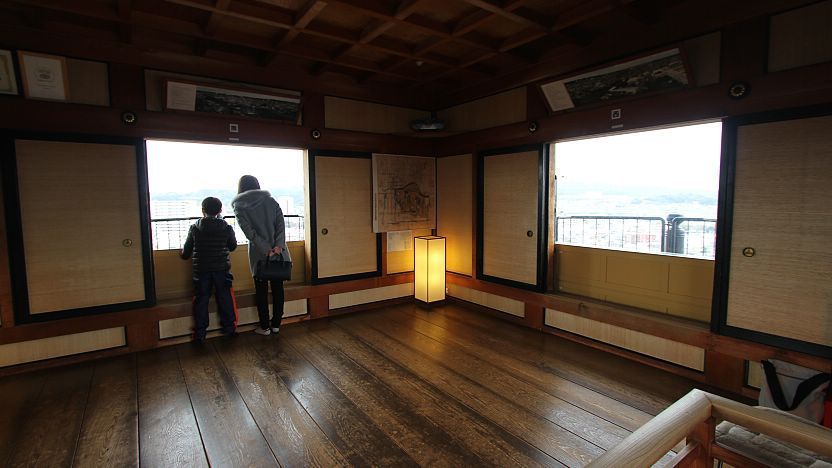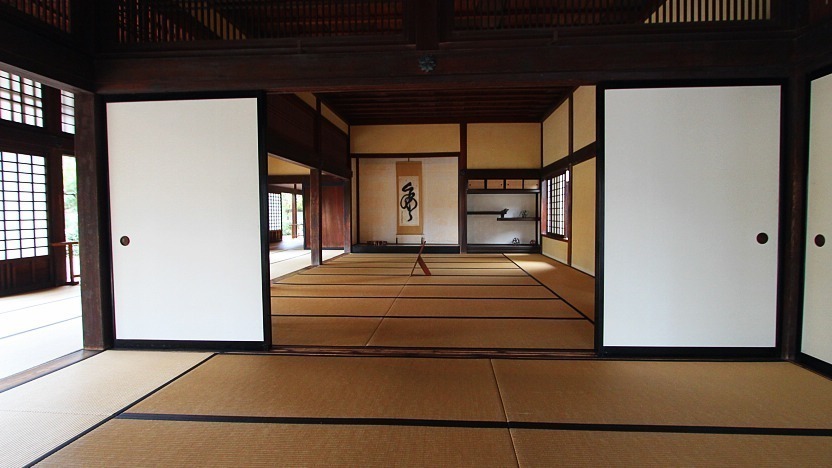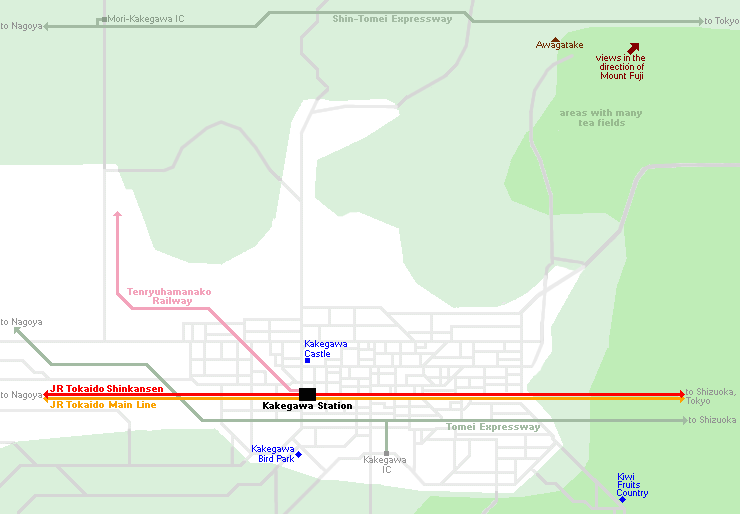
Kakegawa Castle (Ŗ|ÉņÅķ, Kakegawajō) is a castle in Kakegawa whose keep was destroyed at the end of the feudal period in 1869, but rebuilt in 1994. While most castles have been reconstructed in concrete during the 20th century, Kakegawa Castle was the first to be rebuilt using wood. In addition, the castle is noteworthy for its palace, one of only a handful in the country to have survived from the feudal age.
Standing on a tall hill in the city center and sought after for its strategic position along the old Tokaido, the main highway linking present day Tokyo with Kyoto, the castle fell under the control of various lords in the past, including the Tokugawa clan following the decisive Battle of Sekigahara. Today visitors can explore the inside of the castle tower and climb up to its top floor for some nice views of the city.

Next to the castle keep stands the castle palace, which was built in 1855 and is one of only about four castle palaces in Japan to have survived from the feudal period (Nijo Castle's Ninomaru Palace in Kyoto is by far the most prominent among them). The palace served as the residence and offices of the ruling lord. Adjoining the corridors are some grand tatami rooms that previously served as living chambers, reception rooms or offices. Some of them offer nice views of the gardens outside.
Adjacent to the palace, the Ninomaru Tea House affords visitors the opportunity to drink Japanese tea in a traditional setting. Separate fees apply.

Getting there and around
Kakegawa Castle can be reached in a ten minute walk north of Kakegawa Station.
How to get to and around Kakegawa

Hours and Fees
Hours
Closed
Admission
Typical Visit Duration
Questions? Ask in our forum.


